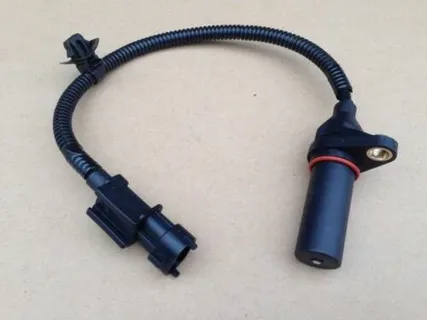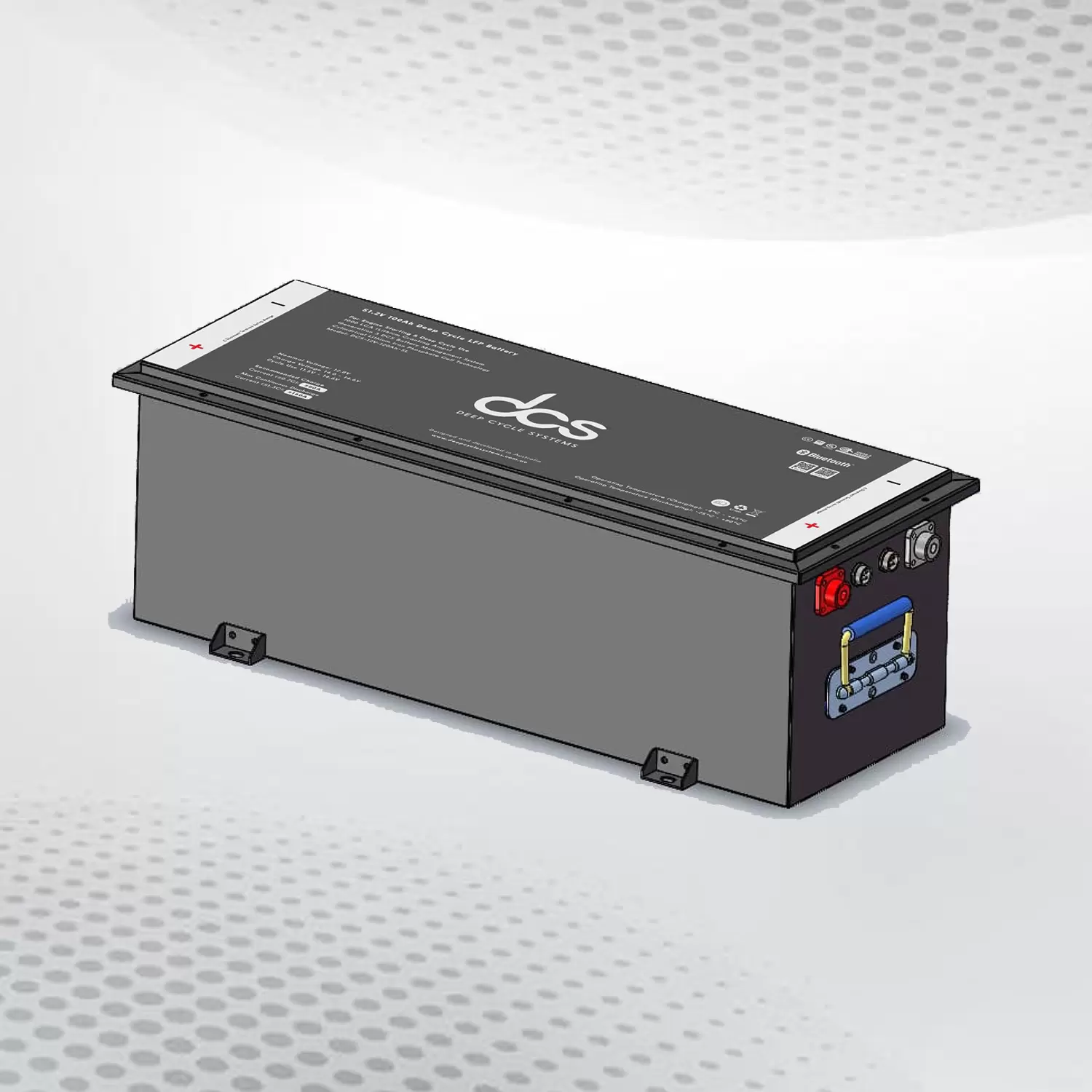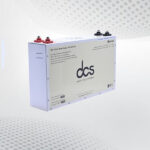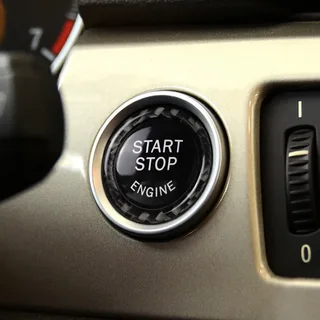In automotive engineering, the crank angle sensor is a crucial component that plays a significant role in a vehicle’s performance. For Kia Rio owners, understanding the impact of the crank angle sensor kia rio can lead to better maintenance and enhanced performance. This post will delve into the intricacies of how the crank angle sensor affects the Kia Rio, particularly focusing on its role in engine timing, fuel efficiency, and more.
Introduction to the Crank Angle Sensor
The crank angle sensor, integral to modern vehicles like the Kia Rio, is tasked with monitoring the position and rotational speed of the crankshaft. This sensor relays critical data to the engine control unit (ECU), optimising ignition timing and fuel injection.
Positioned near the crankshaft, the crank angle sensor detects the exact angle of the crankshaft as it rotates. Providing real-time data helps maintain the engine’s smooth and efficient operation. This crucial component is essential for achieving optimal engine performance and ensuring the vehicle runs reliably.
Importance in Engine Timing
The crank angle sensor is essential in ensuring precise engine timing for a Kia Rio. By providing real-time data on the position and rotational speed of the crankshaft, the engine control unit (ECU) can determine the exact moment to ignite the spark plugs.
This precision helps prevent engine knocking, misfiring, and stalling, safeguarding the engine’s health and performance. Engine timing influences power delivery and impacts fuel efficiency and emissions. The sensor’s role in delivering accurate data ensures that the engine operates smoothly and efficiently, maintaining optimal performance across various driving conditions.
Common Symptoms of a Failing Crank Angle Sensor
Unexpected engine stalling is a common sign of a failing crank angle sensor in a Kia Rio. It can occur while idling or driving and often signals that the sensor is not providing accurate data to the ECU.
Starting Difficulties
Another symptom is Difficulty starting the vehicle. A faulty sensor may prevent the ECU from determining the correct timing for ignition, resulting in prolonged cranking or the engine not starting at all.
Misfiring
Engine misfiring is often associated with a failing crank angle sensor. Misfires can lead to a rough-running engine and decreased performance.
Poor Acceleration
A noticeable drop in Acceleration can occur when the crank angle sensor fails. The sensor’s inability to provide precise data can disrupt the engine’s timing, leading to sluggish performance.
Check Engine Light
The illumination of the check engine light is a clear indicator. The ECU may store error codes related to the crank angle sensor, signalling that it requires attention.
Irregular Idle
An erratic idle can be a symptom of sensor issues. The engine may idle too high or too low or fluctuate unpredictably.
Impact on Fuel Efficiency
The crank angle sensor’s performance directly influences a Kia Rio’s fuel efficiency. A well-functioning sensor ensures precise timing for fuel injection, which is critical for optimal combustion. When the sensor operates correctly, it helps the engine burn fuel more efficiently, reducing consumption and emissions.
On the other hand, a malfunctioning sensor can cause incorrect fuel delivery, leading to incomplete combustion and increased fuel usage. This inefficiency raises fuel costs and contributes to higher emission levels, affecting the vehicle’s environmental footprint. Therefore, maintaining a healthy crank angle sensor is essential for achieving better fuel economy and lower emissions.
Diagnostic Procedures: Kia Rio Crank Angle Sensor
Diagnosing a faulty crank angle sensor in a Kia Rio requires a systematic approach to identify the issue accurately. Initially, a mechanic will use a diagnostic tool to retrieve error codes from the vehicle’s engine control unit (ECU), which can provide valuable insights into any sensor-related problems for Kia Rio Crank Angle Sensor. The sensor and its surrounding components are visually inspected to check for any obvious signs of damage or wear.
Electrical connections are also scrutinised, as loose or corroded connectors can affect sensor performance. To further verify the sensor’s condition, the mechanic may test the sensor’s output signals using specialised equipment. These steps help pinpoint the exact nature of the fault, enabling effective resolution and ensuring the vehicle maintains optimal performance.
Replacement Process
Replacing a crank angle sensor in a Kia Rio involves a detailed process to ensure proper installation and functionality. Initially, the mechanic identifies the sensor’s location, typically positioned near the crankshaft. The vehicle’s battery is then disconnected to prevent any electrical mishaps. The next step involves removing the sensor’s electrical connector and securing it with mounting bolts. The faulty sensor is carefully removed, and the new crank angle sensor is positioned and secured with the mounting bolts.
Reconnecting the electrical connector follows, ensuring all connections are tight and corrosion-free. After the physical replacement, the vehicle’s engine control unit (ECU) may require a reset to acknowledge the new sensor and ensure accurate data transmission. This reset is crucial for the sensor to function correctly, allowing the engine to operate efficiently. When performed methodically, the entire procedure ensures the new crank angle sensor integrates seamlessly with the vehicle’s existing systems, promoting optimal performance.
Preventive Maintenance Tips
Periodically inspect the crank angle sensor for signs of wear, damage, or corrosion. This proactive measure can help identify potential issues before they lead to significant engine problems.
Clean Electrical Connections
Ensure the sensor’s electrical connectors are clean and corrosion-free. Dirty or corroded connectors can disrupt data flow, leading to sensor malfunctions.
Monitor Engine Performance
Monitor the vehicle’s engine performance. Unusual symptoms such as misfiring, stalling, or irregular idling can be early indicators of a sensor issue.
Use Quality Fuel
Opt for high-quality fuel to minimise deposits affecting sensor performance. Poor-quality fuel can lead to carbon build-up, impacting the sensor’s ability to relay accurate data.
Follow Service Intervals
Adhere to the recommended service intervals for the vehicle. Regular maintenance checks by a professional can ensure the sensor and other critical components are functioning optimally.
Avoid Harsh Conditions
Avoid exposing the vehicle to extreme temperatures or conditions that could accelerate wear on the sensor. Harsh environments can shorten the sensor’s lifespan, leading to premature failure.
Differences in JB Rio Crank Angle Sensors
The JB Rio Crank Angle Sensor may incorporate unique variations in the design or specifications of its crank angle sensor. These differences are primarily due to the specific engineering requirements and technological advancements integrated into this model. For instance, the JB Rio might utilise a crank angle sensor with distinct electrical connectors or a different mounting setup from other Kia Rio models.
Additionally, the signal processing capabilities and compatibility with the engine control unit (ECU) could vary, necessitating particular attention during diagnostics and replacement procedures. Considering these model-specific nuances, it is advisable to consult the vehicle’s service manual or seek professional guidance to ensure the correct sensor is selected and installed. Properly handling these differences is crucial to maintain the vehicle’s optimal performance and prevent potential engine issues.
Troubleshooting Common Issues
Troubleshooting common issues with the crank angle sensor in a Kia Rio involves several key steps. Initially, inspecting the alignment of the sensor is crucial, as improper positioning can lead to inaccurate data transmission to the ECU. It’s essential also to examine the electrical connections for signs of corrosion or looseness, as these can disrupt the sensor’s functionality.
Using a diagnostic tool to read fault codes stored in the ECU can provide valuable insights into potential issues, helping to pinpoint the exact nature of the problem. Sometimes, cleaning the sensor and its connections can resolve minor issues. If the sensor continues to malfunction, it may be necessary to test its output signals using specialised equipment to ensure it operates within the required parameters. These troubleshooting steps can help identify and address common issues, maintain the vehicle’s performance, and prevent more severe problems.
Benefits of OEM vs Aftermarket Sensors
When selecting a replacement crank angle sensor for a Kia Rio, one can choose between OEM (Original Equipment Manufacturer) and aftermarket sensors.
- OEM sensors are produced by the same manufacturer that supplied the original part for the vehicle, ensuring a precise fit and adherence to the manufacturer’s specifications.
- This often results in superior reliability and longevity.
- On the other hand, aftermarket sensors are created by third-party manufacturers and can offer various prices and quality levels.
- While they may be more cost-effective, their compatibility and performance can vary, potentially leading to inconsistencies in engine performance.
- Evaluating the trade-offs between cost and quality is essential when opting for an aftermarket sensor.
- Properly assessing these factors will help maintain the vehicle’s optimal functionality.
Understanding Sensor Calibration and Reset
Sensor calibration and resetting are critical after installing a new crank angle sensor in a Kia Rio. These steps ensure the sensor communicates accurate data to the engine control unit (ECU), optimising engine performance. The process typically involves disconnecting the vehicle’s battery to clear any residual data in the ECU. Once reconnected, the ECU must undergo a reset to recognise the new sensor’s parameters.
Some models may require a specialised diagnostic tool to complete the calibration process accurately. This tool interfaces with the ECU to input the correct settings for the newly installed sensor. Ensuring proper calibration helps maintain the engine’s smooth operation and prevents issues such as misfiring, stalling, or inefficient fuel consumption. Following these procedures guarantees that the new crank angle sensor functions as intended, promoting overall vehicle reliability and performance.
Diagnosing and Addressing
On the contrary, a malfunctioning sensor can lead to various issues, including engine stalling, misfiring, and poor Acceleration. Diagnosing and addressing these problems promptly can prevent further damage and costly repairs. Regular inspections and maintenance, such as keeping electrical connections clean and adhering to service intervals, are essential for prolonging the sensor’s lifespan.
Choosing between OEM and aftermarket sensors involves considering costs, compatibility, and quality, each of which can impact long-term vehicle performance. Calibration and resetting procedures are critical post-replacement steps to ensure the sensor’s optimal functionality.
By understanding the importance of this component and taking proactive measures, one can significantly improve the reliability and performance of a Kia Rio. This highlights the necessity of maintaining a well-functioning crank angle sensor for the vehicle’s overall health.
Conclusion
The Kia Rio Crank Angle Sensor extends far beyond mere data collection; it is a pivotal element influencing various engine performance aspects. Its primary function of monitoring the crankshaft’s position and rotational speed allows the engine control unit (ECU) to make precise adjustments in ignition timing and fuel injection, thus ensuring efficient combustion. When this sensor functions correctly, it enhances fuel economy, reduces emissions, and maintains smooth engine operation.
FAQs
What are the signs of a bad crank angle sensor in a Kia Rio?
Typical symptoms include unexpected engine stalling, difficulties in starting the vehicle, engine misfiring, poor Acceleration, the check engine light coming on, and an irregular idle.
Is it safe to drive with a faulty Kia Rio Crank Angle Sensor?
Driving with a Kia Rio Crank Angle Sensor is not recommended. It can lead to significant engine performance issues, increased fuel consumption, and potential damage to the engine, which may result in costly repairs.
How much does it cost to replace a crank angle sensor in a Kia Rio?
The replacement cost for a crank angle sensor in a Kia Rio generally ranges from £100 to £300, depending on the type of sensor and labour charges. It’s advisable to consult a professional mechanic for an accurate estimate based on specific circumstances.




